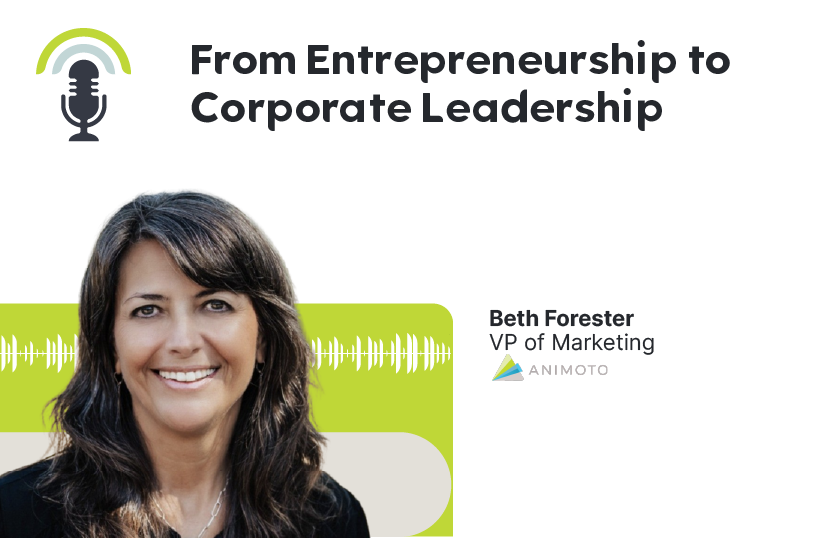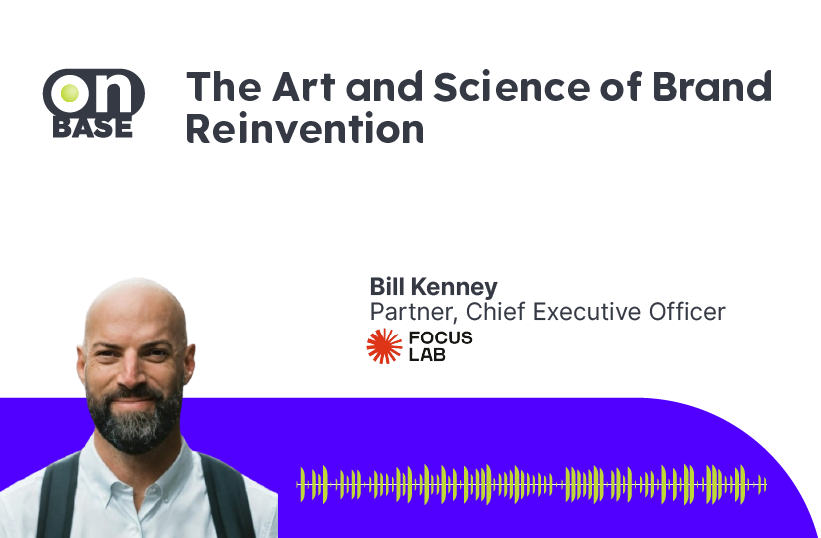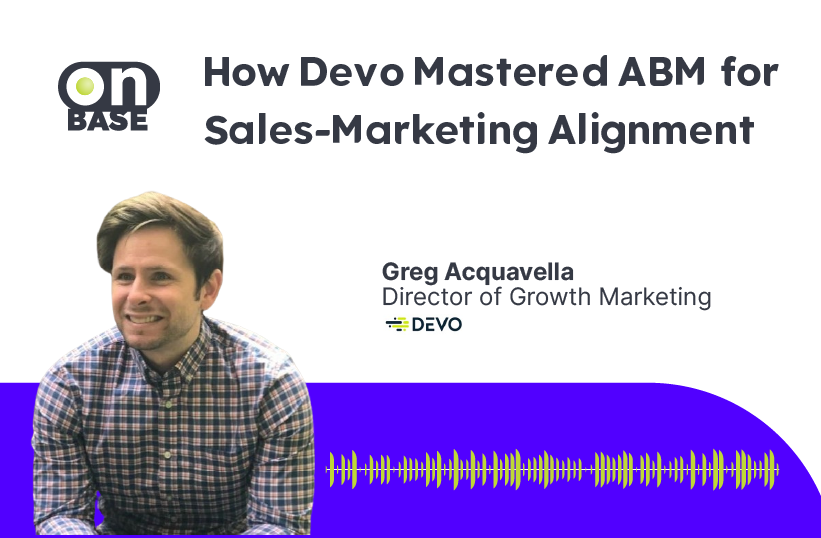
Journeying Across Roles: Insights from Entrepreneurship to Corporate Leadership
Shownotes
In this episode of Sunny Side Up, Chris Moody interviews Beth Forester on her journey from entrepreneurship to corporate leadership. Beth talks about the challenges and rewards of transitioning from running her own business for over two decades to navigating the corporate world of SaaS at Animoto. She emphasises the importance of stakeholder buy-in and the significant role of product marketing from the early stages of development. Throughout the discussion, Beth highlights the value of learning directly from customers, prioritising core SaaS metrics, and building trust to drive collaboration. Our conversation is packed with insights for those navigating career changes or transitions between startups and established organisations.
About the Guest
Beth Forester is a dynamic marketer fueled by a passion for data and storytelling. From founding her first company in her early 20s to her experience as a product marketer in the tech industry, she gained a deep understanding of market dynamics, pricing strategy, SaaS business models, consumer behaviour, and product positioning. Her unique career trajectory, entrepreneurial spirit, and diverse experience have established her as a formidable leader in her field. She currently is the VP of Marketing at Animoto, where she leads a team of talented and passionate marketing and customer service professionals.
Key Takeaways
- Major career shifts can be daunting, but sometimes, they are necessary steps towards greater fulfilment and success.
- Clear communication and alignment become paramount in larger organisations where multiple stakeholders are involved.
- Integrating product marketing early in the development process can enhance product value and market relevance.
- Understanding and articulating the broader benefits of a change can help in gaining buy-in from various departments.
- By breaking down decisions into a series of simple questions, it becomes easier to evaluate the potential impact and value of different initiatives, leading to more informed choices.
- Regular and direct communication with customers provides valuable, real-time feedback.
- Recognise the potential of expansion revenue, especially if there’s limited scope for upselling or cross-selling.
- Understand that genuine product adoption signifies real value to customers.
- Top-of-the-funnel growth is crucial; ensure initiatives align with driving this growth.
- Building trust is essential for collaboration and team success.
Quote
“Probably the most beneficial thing that you can bring as a product marketer is diplomacy and gaining trust and being able to collaborate well with your team.”
– Beth Forester
Highlights from the Episode
Can you provide insights into your experiences as you transitioned from being an entrepreneur to a corporate executive?
Beth shares her challenging yet rewarding transition from being an entrepreneur of over 20 years to a corporate executive. At around 45 or 46, she felt the need for a career change and believed there was more room for growth in the corporate world. Even though she had gained many entrepreneurial skills, the nature of her entrepreneurial job was physical, pushing them towards a desk job for longevity. Despite initial fears, Beth says this decision was among the best she’s ever made.
Can you share some key learnings from developing the product marketing function at Animoto, where you are now in the video space?
Before, in her entrepreneurial role, Beth made all the decisions and mainly operated independently. However, upon joining Animoto, she discovered the importance of stakeholder buy-in, alignment, and different metric considerations, given its SaaS nature. While she had to adapt to not always being the end decision-maker and had to prioritise among many opportunities, she described the experience as both challenging and enjoyable.
How did you develop your strategic framework for product marketing at Animoto, and can you shed light on its complexities beyond coordinating launches?
Through her entrepreneurial experience, Beth had previously managed diverse roles, from customer support to marketing, providing her with a unique perspective. At Animoto, she noticed product departments operating in silos and recognised the need for a more cohesive approach. Despite initially being unfamiliar with the concept of product marketing, Beth educated herself and began emphasising its significance, ensuring it was introduced early in the product development process. This endeavour required substantial diplomacy, ensuring every department understood the benefits and efficiencies this approach would bring.
Can you tell us about the scoring model you used and how its guiding questions helped tie product launches and their promotion?
Beth, in her efforts to establish product marketing within her organisation, introduced a scoring system to create alignment and foster decision-making involvement. By tearing frameworks and modifying them to suit the company’s needs, she focused on crucial SaaS metrics and simplified the evaluation process with a six-question scoring method. This approach not only brought clarity and order but also facilitated a shift in perspective, leading to more strategic prioritisation and a shared understanding of business value.
How did your entrepreneurial background enhance your understanding of customer needs and values? How did this shape your approach to tech leadership?
When building your product marketing strategies, always consider incorporating direct customer feedback. From Beth’s experience, a firsthand understanding of customers’ needs and values can be pivotal. Especially for those with entrepreneurial backgrounds, this deep customer connection can be a significant advantage in tech leadership. Remember, insights gained directly from customers can be far more impactful than assumptions. Always prioritise customer voices and use them as guiding lights for your strategies and decisions.
What are some of the significant metrics you look at when guiding businesses?
In driving growth, it’s crucial to emphasise core metrics such as sales, revenue, monthly recurring revenue, and retention. It’s also wise to explore expansion revenue, especially when there’s limited room for cross-selling or upselling. Always remember that true product adoption represents genuine value to your customers. If you operate under a freemium model, be especially conscious of factors influencing top-of-the-funnel growth, ensuring that your strategies align with these growth objectives.
When implementing a new strategic framework, did you encounter significant challenges, and if so, which stood out as the most daunting?
A significant hurdle in the rollout of the strategic framework was ensuring team buy-in. The main challenge was demonstrating that the new method was efficient and that everyone played a vital role. Integrating marketers into product teams from the onset of development emerged as an essential step to pre-emptively address the product’s market potential.
How has your background in business and entrepreneurship helped you navigate all the different stakeholders and challenges you’ve encountered throughout your career?
As a prior sole proprietor and business owner, Beth’s multifaceted exposure fostered an empathetic approach, allowing her to connect and gain trust more effectively in a corporate environment. She introduced a tiering framework in the corporate setting to align team efforts with revenue generation.
Is there a book, blog, newsletter, website, or video that you would recommend to our listeners?
How to Win Friends & Influence People by Dale Carnegie
Product Marketing Debunked by Yasmeen Turayhi
Shout-outs
Yasmeen (Roxanne) Turayhi – Co-Founder at Blood Moon Box and Author
Patrick Campbell – Founder & CEO at ProfitWell

Sunny Side Up
B2B podcast for, Smarter GTM™



